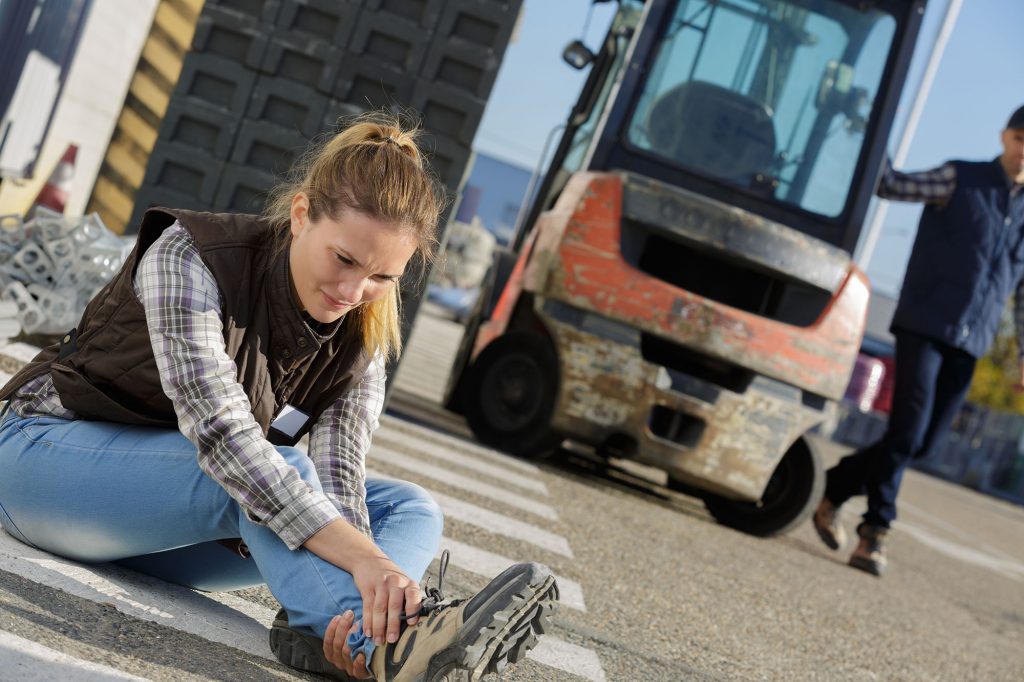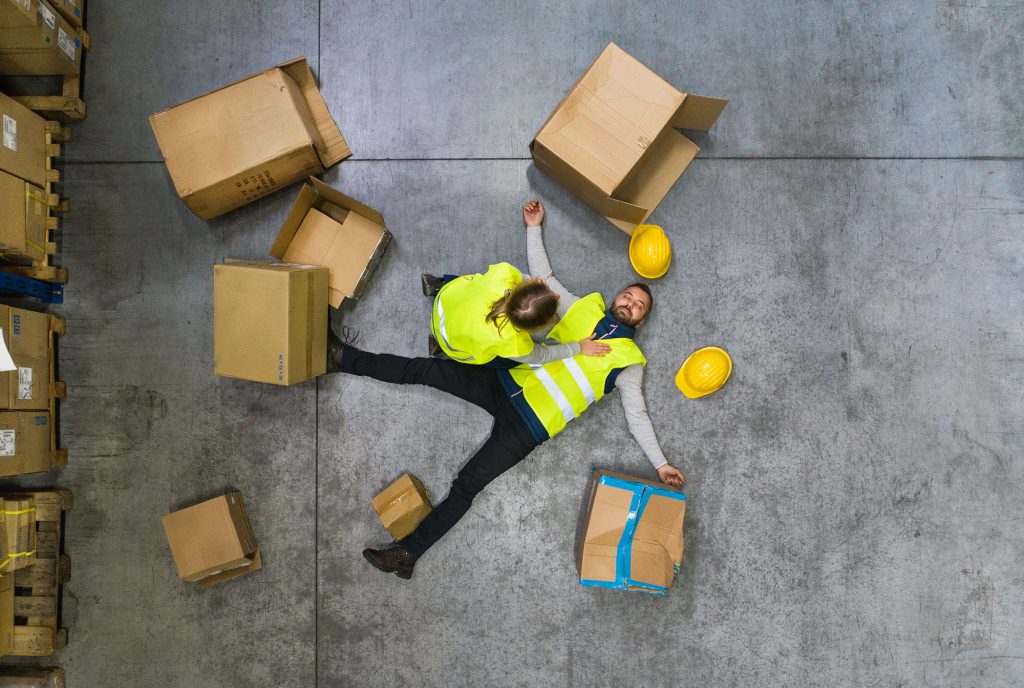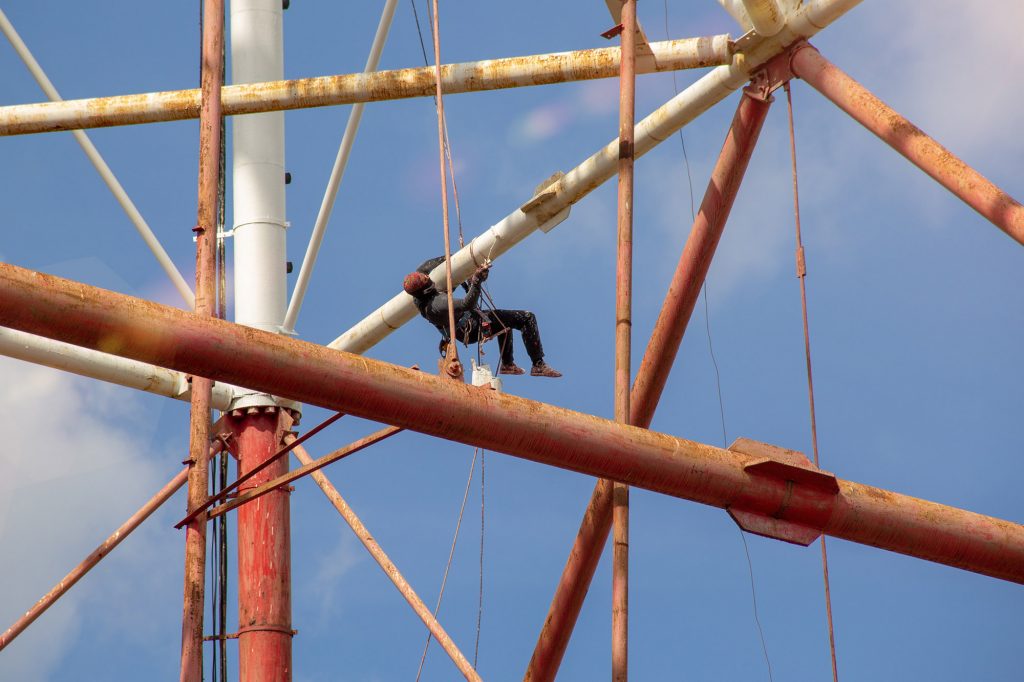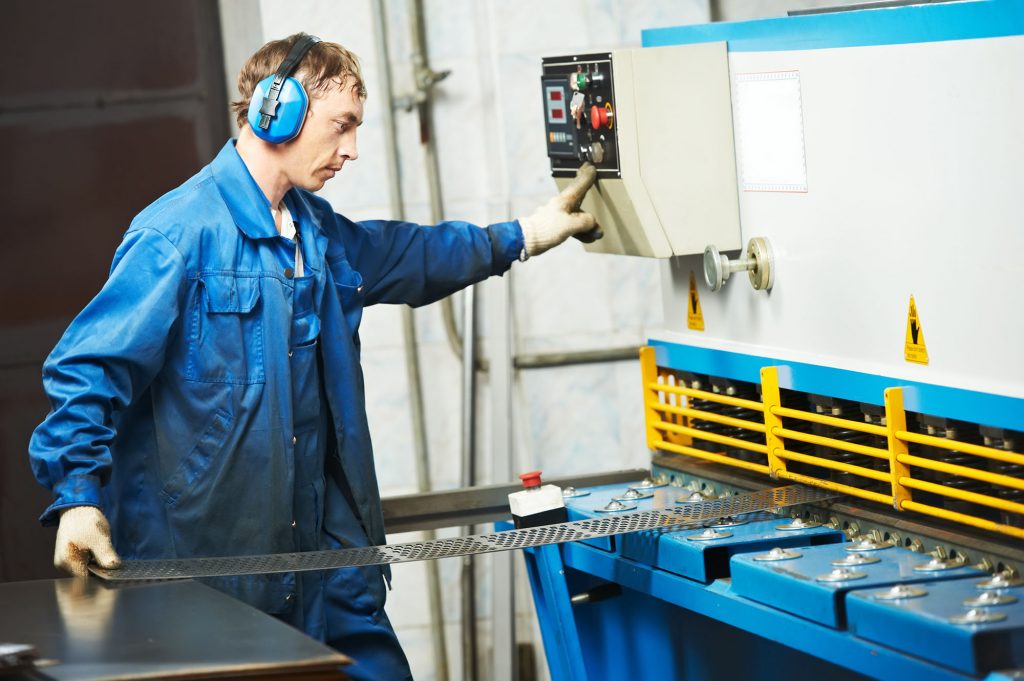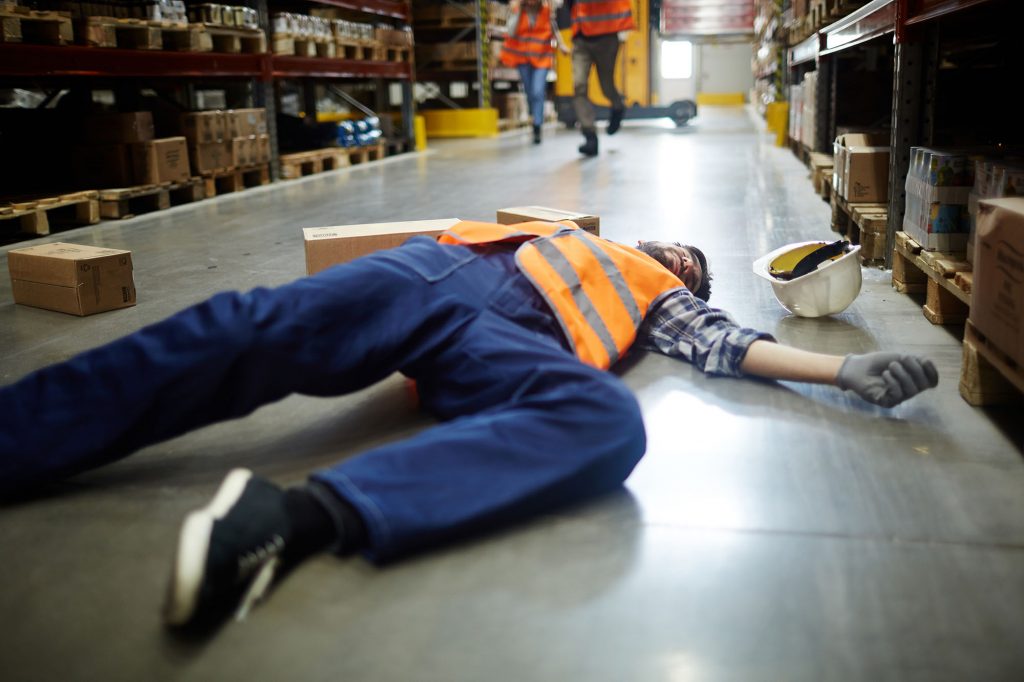Accidents from Heavy Lifting at Work — Claim Compensation for Manual Handling Injuries
If you have suffered an injury from heavy lifting at work, our panel of solicitors may be able to help you claim compensation. Whether it is broken bones, or something that lasts long-term, contact us today to get no-obligation guidance and to find out if you can claim on a no win, no fee* basis.
Lifting and carrying injuries in the UK
Lifting and carrying things at work is such a common task that it is usually innocuous. In recent years there has been much better education into proper practices surrounding manual handling and heavy lifting, especially in office settings, where a singular box of paper is so inordinately heavy it takes workers by surprise and causes injury.
However, there is still much to do. Averagely there has been one death a year from handling, lifting or carrying accidents at work — this is still one too many. In relation to non-fatal injuries, fast-paced, small-margin, high-output type companies can really put their workers at risk by not allowing them sufficient time to prepare and recover from heavy lifting.
Whilst accidents typically result in an injury — one which you could potentially claim compensation for — manual handling and heavy lifting can also present themselves as a musculoskeletal disorder over time. Whilst a singular, severe injury gets a lot of justifiable attention, musculoskeletal disorders can have an even larger impact on your life. Things that were once straight forward, like sleeping or typing, have now become painful and taxing.
Can I claim worker’s compensation for an injury from manual handling?
If it can be proven that your injury was the result of employer negligence, then yes, and the amount will vary depending on the severity and impact the injury has to your life. It could be a case of improper training, an absence of mechanical lifting equipment where necessary, or even unobservant staff — if factors outside your direct control have put you at risk, you will likely have a strong claim. It is always best to ask our team of personal injury lawyers** for guidance, and we can do so for free and with no-obligation to yourself. Just call 08082391859^ to speak to an advisor.
Can I seek compensation for ongoing pain and suffering from repetitive lifting and carrying at work?
This is a little trickier to build a case for, mostly because opposition insurers or legal teams are likely to point fingers at out-of-work factors that could influence musculoskeletal damage. Whilst we want the best for our clients, we also want to manage expectations. If you feel you can clearly highlight how your workplace as caused ongoing back, limb, or neck pain or even exacerbated an existing condition that you’ve made your employer aware of, then speak to us. We can help you look at the claim from a legal perspective and ask questions that will help get to the root cause of the problem. Call us on 08082391859^ and we’ll spend as long as you need on the phone to discuss your case for claiming workers compensation.
Factors contributing to injury or musculoskeletal damage from heavy lifting and carrying at work.
Your workplace practices will vary from industry to industry, but the main issue lies in education. If heavy lifting is not a common part of your role, or is expected of you when it shouldn’t be, then your employer could be putting you at an unnecessary risk. Here are some of the factors that can cause injury or lasting damage:
- Not assessing or knowing weight properly before lifting
- Reduced visibility, leading to strikes against objects or even moving vehicles
- Unclear obstacles, including people, that cause you to drop the weight onto yourself
- Carrying objects that are not ergonomic or difficult to hold properly
- Not having access to help when needed
- Frequent and repetitive tasking without enough rest time
- Improper training into manual handling.
- Not having suitable PPE, like steel-toe-capped boots.
- Threat of dismissal or loss of hours at work for raising pain and suffering from lifting and carrying.
- Unreasonable expectation to carry very heavy loads that will cause strain in the back or arms.
- Carrying heavy objects whilst working at height is particularly dangerous.
- Falling when carrying objects and breaking or fracturing limbs.
What prevention methods are there for injuries and musculoskeletal disorders caused by heavy lifting at work?
Quite often, in the case of accidents, the injury has come indirectly from pressure to perform outside the normal scope of employment. In these cases, work-cultural factors can prevent people from refusing to manually handle heavy equipment. This is especially true of males, even more so for those over 50, who suffer vastly more injuries from working than females. Regardless of gender, you can be as strong as an ox, but if you’re not properly prepared or educated in how to lift, you could do serious damage to yourself.
Where heavy lifting is part of the job, education is still a fundamental. Statistics show that most of the injuries sustained at work come during the first 6 months of employment. This means it is imperative to not only educate in the first instance, but to keep an eye on new employees and revisit training to make sure they’ve put into practice the prevention measures. It is also required that PPE is supplied where necessary, and it is functional for the role.
When it comes to musculoskeletal damage, this is usually a result of ongoing or routine practices that workers do not have sufficient rest time to recover from. Allowing workers to take their time instead of putting on pressure to perform will help mitigate improper handling and muscle damage; even avoiding stress in the process.
What should you do if you have been injured or feel in pain from manual handling at work?
In both instances it is important to make your employer aware. They either need to record the incident in the Accident Book in the event of an injury or be made aware of a developing muscle disorder in order to stop it getting worse.
It might be worth getting statements from colleagues about the events leading to the injury, or of the workplace culture if there is a sense of productivity-before-people.
If you feel that your employer hasn’t done enough, or negligent practices have caused you injury, pain or suffering, speak to our team today to evaluate your case for free.
Where on the body do you typically suffer injury or muscle problems from heavy lifting at work?
Despite the phrase “breaking my back at work” it is fortunately quite difficult to do so, especially from lifting. What most often manifests are musculoskeletal problems. In 2018/19 there were 0.5 million sufferers of such problems tied directly to the workplace, either as new cases or cases continuing to get worse. These disorders account for 29% of all working days lost in the same period — some 6.9million days. Proportionally, these types of injuries resulted in more than 7 days off per incidence than other non-fatal injuries reported to RIDDOR.
Damage to our backs are the singular most common area for a musculoskeletal disorder — at 40% of those reported cases. Upper limbs and necks collectively account for 41% of them, in contrast, with lower limbs at 19% of the total.
There are multiple stress points when lifting we experience, most of them trigger depending on how we lift — which is why education is so important. Whilst with light-lifting we tend to take weight onto our arms and wrists — leading often overtime to repetitive strain injury — our lumbar spine takes the force as our centre of gravity shifts from the new weight. What is quite common is the snapping sensation reported where muscles give out during a lift. This tends to be where people draw the line, but this doesn’t always have to happen for people to experience discomfort.
Even in areas such as our arms and hands, any force concentrated on small areas of the body poses a risk of bodily damage. Toes and feet can also be in the firing line when dropping heavy objects, which is one of the reasons PPE, like steel toe-capped boots, is so important.
Such injuries are not usually life-threatening, but can severely impair the lives of people. We seek to rectify such issues where your employer is known to have caused life-changing problems in pursuit of productivity goals.
In what industries do manual handling of heavy objects typically take place?
Quite often we look to trades that require moving objects from one place to a new one for the purpose of building, delivering or disposal. As such, construction — notably for large objects in a dangerous environment, transportation and storage usually where warehouses are concerned, and waste management are where minds go to. However, there is a tendency to overlook agriculture, forestry and fishing, as well as human health and social work — both require manual handling in different forms, the latter in people themselves.
Even in industries that typically have office environments, like Information and Communication, the infrequency of lifting can pose risks. Retail and Wholesale requires movement of goods and produce by individuals on a routine basis too, the scale varies wildly. Ultimately, whatever type of job you have, it is imperative you’re trained in proper manual handling practices.
Is it worth speaking to one of your solicitors** for an injury or pain and suffering caused by heavy lifting at work?
Absolutely. Even if the result is the knowledge that you don’t have a claim, it can help to put the issue to rest. Employers have been known to dismiss and downplay fault surrounding injuries their workers have experienced to avoid such claims. People then feel progressing their case might be more expensive than it’s worth — this is simply not the case. We will start your claim assessment for free, and investigate your claim on a no win, no fee basis, meaning we don’t profit until you do.
What advantages do I have if I claim manual handling compensation with Workplace Injury Claims?
- We have a team of technical qualifiers who can assess your claim for free. If they feel you have a case, we bring your claim to one of our panel solicitors — that way you don’t run up any legal fees by just asking questions.
- Our telephony team is open 24hrs a day, but you can leave them a message with our contact form, and they’ll get back to you within a few working days.
- Our panel of workplace injury solicitors can work on a no win, no fee* basis, meaning again, you’re not drumming up expensive legal fees by claiming for your personal injury.
- The team covers the whole of the UK, and you’ll be assigned a panel solicitor depending on if you’re in England and Wales, or Scotland.
- Our panel solicitors have helped thousands of injured people claim compensation.
- We can also help with rehabilitation; arranging physio as part of a whole accident management package.
- Our UK call centre is based in Manchester.
- We fight for the maximum compensation for your work injury, because ultimately your job is to make the company successful, and they should at least ensure your safety in exchange.
- When we calculate your claim amount, we factor in loss of earnings, general expenses and any ongoing costs incurred by the injury, so that you get the highest level of compensation due to you.
- We’re friendly, empathetic and here to help you however we can.

Get in touch with our workplace injury solicitors** today to find how if and how much compensation you could claim.
If you’ve had an accident at work and someone else is at fault, call our accident helpline today on 08082391859^ to start your claim — we’re here to help.




